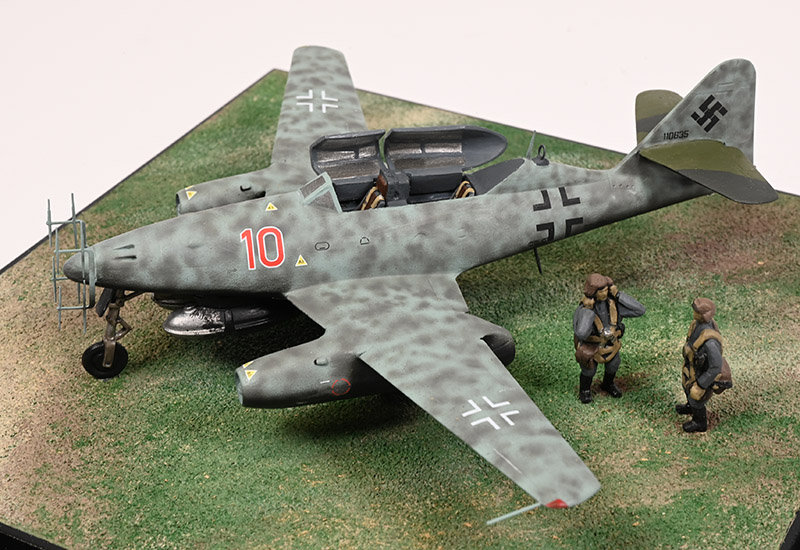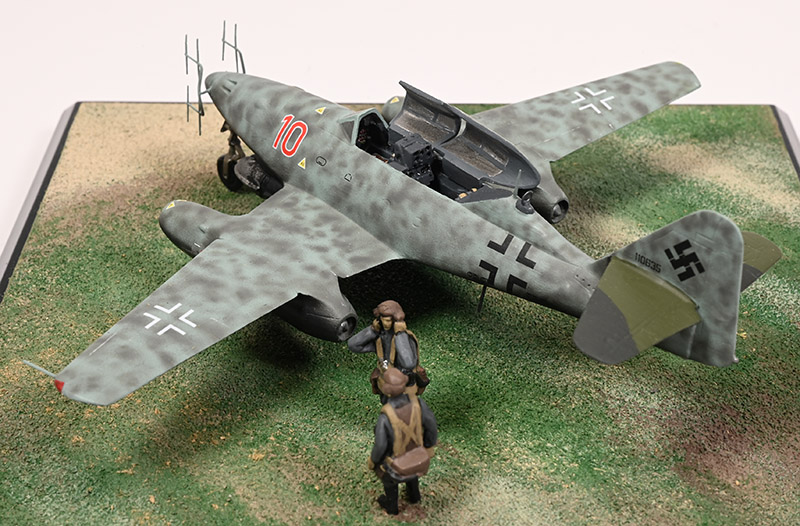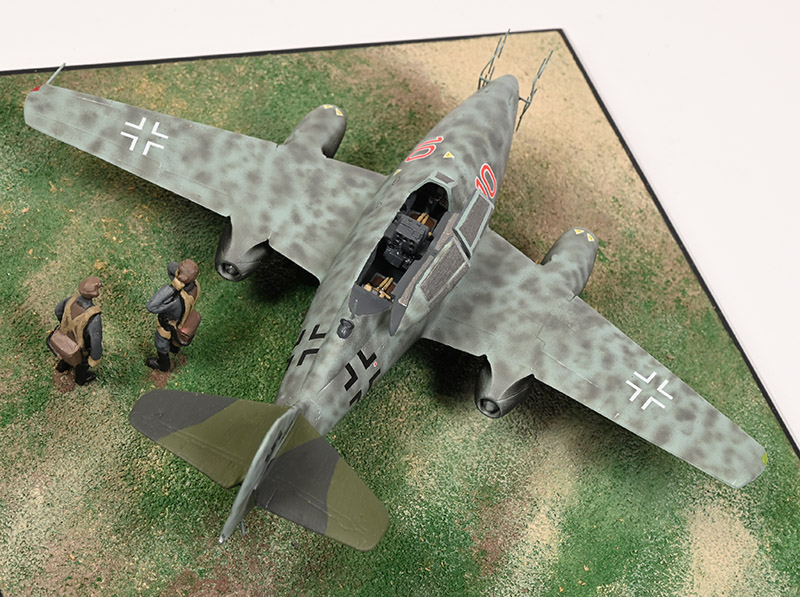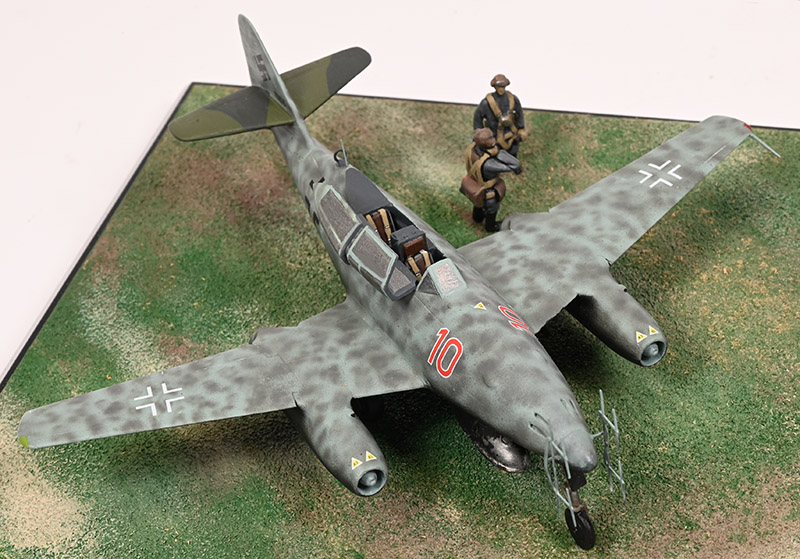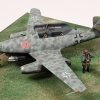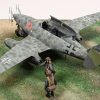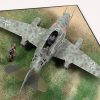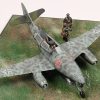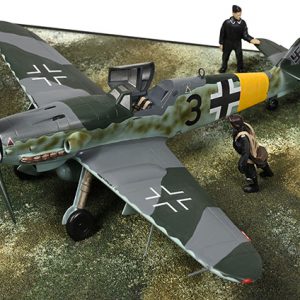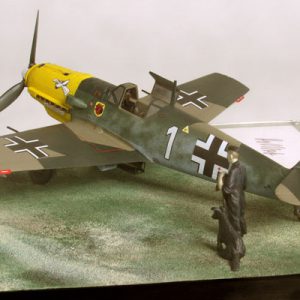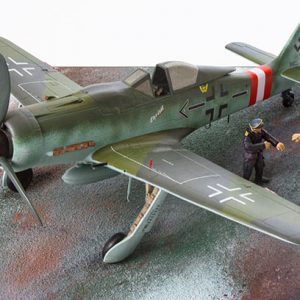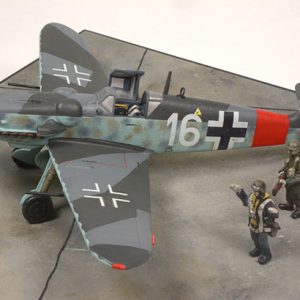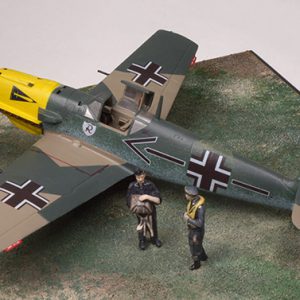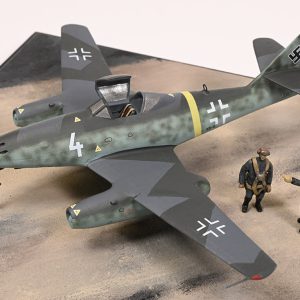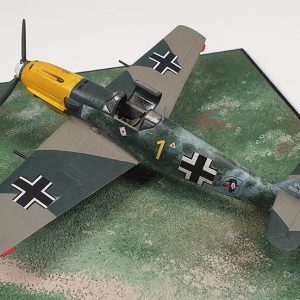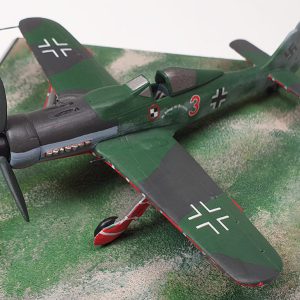Messerschmitt Me 262 B-1a/U1 ‘Red 10’ Werknummer WNr 110 635
10./.NJG 11, Oberleutnant Kurt Welter, Schleswig, Germany, May 1945.
The Messerschmitt Me 262 was the first jet engined fighter to see air-to-air combat. The development programme was underway as early as 1940, but problems with the Jumbo 004 jet engines resulted in the aircraft’s introduction to service being delayed into 1944. Conceived as an interceptor, there was more delay in implementing this role fully while the type was adapted for ground attack tasks.
In comparison to its daylight operational role as day fighter, the concept of the Me 262 as a night fighter was developed later, at the end of summer 1944. The type of mission flown by the Me 262 at night was, from the outset, clearly identified as the interception of the de Havilland Mosquito bomber, pathfinder and reconnaissance aircraft. In addition to the RAF’s Mosquitos, the Luftwaffe’s problems were increased from February 1944 onwards, as a steady flow of the photographic reconnaissance versions were provided to the USAAF’s 25th Bomb Group for night photography and weather reconnaissance over occupied Europe.
Following trials with radar fitted to a single-seater Me 262, it was decided to equip two-seaters still on the production line with FuG 218 Neptun V radars, with prominent “Stag’s Antlers” aerials on the nose. These reduced the aircraft’s top speed by about 55 km/h. Seven of these night fighter variants, designated Me 262B-1a/U1, were used by 10. Nachtjagdgeschwader (NJG) 11 in April 1945 in the defence of Berlin, the only unit to be so equipped.
On 2nd November 1944, Kurt Welter was transferred back to NJG 11, his former unit. Here he was given command of a special Kommando dedicated to performing nocturnal interception with the Me 262 jet fighter. According to some sources, Welter added a Lancaster to his growing list of Mosquitos on the night of 12th December 1944, the first night victory by a jet fighter. Other sources state that his first aerial victory flying the Me 262 was claimed either on the night of 2nd or 5th January 1945. While Welter himself may have attempted one or two night-time four-engine bomber interceptions on his own account, not one 10./NJG 11 pilot recorded so much as a single encounter with an RAF heavy bomber that is verifiable. Welter claimed three aerial victories while flying the Me 262 by early February 1945. Thereafter, he made a string of questionable air combat claims against Mosquito aircraft in the Berlin area. The last known aerial combat claim by Welter occurred on the night of 3rd April 1945, when a Mosquito of No. 139 Squadron RAF, was shot down over Berlin. Welter was awarded the Knight’s Cross of the Iron Cross with Oak Leaves (Ritterkreuz des Eisernen Kreuzes mit Eichenlaub) on 11th March 1945 for a claimed total of 48 victories. In early May 1945, 10./NJG 11 relocated to Schleswig Airfield, its last relocation before the German surrender. There, Welter was taken prisoner of war by British forces and interrogated by the RAF. In mid-1945, he was released from captivity.
Much of the controversy surrounding Welter’s claims for success in nocturnal aerial combat with the Me 262 stems from a memorandum written by Welter on 29th May 1945 for his British captors. According to the memo, a total of 25 Mosquitoes and two Lancasters were claimed in aerial combat by Welter, while other pilots in his unit claimed a further 21 kills. Official Luftwaffe documents show that by 4th April 1945, 10./NJG 11 had claimed 34 aerial victories, of which only one was claimed in a two-seater Me 262. Research of RAF records show that at most 15 Mosquitoes could have been possibly destroyed by Kommando Welter.
Me 262 Red 10 WNr 110635 was initially built as a standard single-seat A-1a at Leipheim. It was then forwarded to the Deutsche Lufthansa workshops at Staaken for conversion to a twin-seater. It was accepted by 10./NJG 11 on 30th March 1945. The extant photos of the aircraft following capture in May 1945 reveal very light-coloured upper surfaces (fuselage and wings), that most probably were a lightened version of RLM 76 Weissblau (white blue). A scattered wavy pattern of a darker colour is noticeable on the wings and fuselage upper surfaces that is thought to be RLM 83 Dunkelgrün (dark green). In contrast the tailplane horizontal stabilisers are painted a solid pattern dark colour which could again be 83 Dunkelgrün (dark green). Undersides were painted overall RLM 22 (Schwarzblack).


